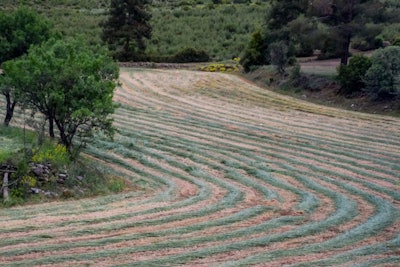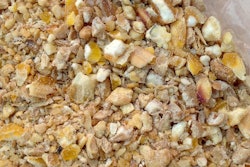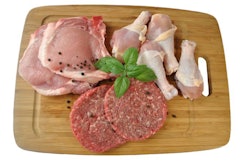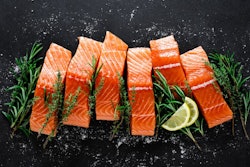
Flooding, dry fall contribute to extremely poor hay quality and forage shortages in the Midwest
Land grant universities in the Midwestern U.S. are urging producers in the region to test their hay and consider supplemental feed this winter on account of extremely poor hay quality.
Much of this year’s hay crop has extremely high fiber content and may be essentially devoid of nutrition for most animals, according to Keith Johnson, a forage specialist at Purdue University, who described the hay he’s seen so far this year as “closer to being straw.” As a result, he and other specialists say producers must take action now — even bringing in a nutritionist if necessary — to avoid losing condition on their animals over the winter.
The fiber content of the hay tested this year at Purdue is so high, Johnson said, that cattle, sheep, goats and other animals are physically incapable of eating enough of it to satisfy their nutritional needs.
The situation is exacerbated by the limited availability of forage in the field, which will increase the number of cattle fed hay in the Midwest this winter.
The wet, late spring this year, coupled by dry fall and wet harvest, caused both situations, Johnson said. A lack of rainfall in September and October reduced pasture growth, while the late spring forced farmers to harvest alfalfa and grass hay as late as June, impairing the hay’s nutritional value. The late freeze-thaw cycle also caused many alfalfa stands to thin or die entirely, which further reduced the quality and availability of hay in across multiple states, including Indiana, Ohio, Michigan, Kentucky and Illinois.
“Overall, because of this whole scenario, feed inventory is sitting at a really critical point right now,” said Maurice Eastridge, a professor of animal science at Ohio State University. “We are going to have to do some planning of reducing forage in the diet, maybe even purchasing hay from out west, or looking at some non-forage fiber sources.”
Distillers grains, wheat middlings, soy hulls or even whole cottonseed could help bridge the gap, Eastridge said. Corn silage may also play an important role, as tests suggest corn quality held up better than hay, he said.
If they haven’t already, Johnson said, producers should have samples of their hay tested before feeding this year to understand what, if any, nutritional supplements will be needed to get their animals through the winter. Their local land grant university extension office can assist with testing, which he estimated could cost $15-$30, and may be able to offer nutritional advice as well to help producers develop a feed ration that will meet their herd’s nutritional needs.
“If they feed as they normally would, they would potentially put the animal in jeopardy,” Johnson said.
The poor quality hay could lead to stillbirths or weak offspring that suffer life-long consequences, Johnson said. Without a supplement, animals raised on this year’s hay could lose condition and become unable to breed for as long as a year; dairy cattle could also see reduced milk production.
If producers wait to see these signs in their animals, Johnson warned, it could become difficult for the animal to return to its previous condition, as there may be insufficient hay and feed supplies in the region to provide an ailing animal with the nutrition it would require.
Some producers may also have to consider culling less-productive animals to make it through the winter, Eastridge said.
“It may be worthwhile to sell some animals,” he said, “rather than trying to carry them through the winter on a limited forage supply.”











